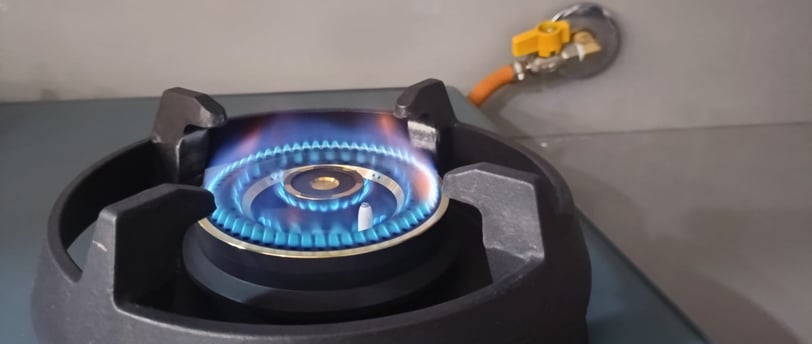Top Innovations in Gas Pipeline Technology
These innovations make gas pipeline fitting safer, more efficient, and cost-effective, benefiting both homeowners and industries alike.
11/14/20243 min read


The gas pipeline industry has seen tremendous technological advancements in recent years. These innovations make gas pipeline fitting safer, more efficient, and cost-effective, benefiting both homeowners and industries alike. Let’s explore some of the top innovations transforming gas pipeline fitting and enhancing safety, durability, and sustainability.
1. Smart Pipeline Monitoring Systems
Overview: Smart monitoring systems use sensors and Internet of Things (IoT) technology to continuously monitor gas pipelines for pressure, temperature, and leak detection.
Benefits: These systems instantly alert operators to irregularities, preventing leaks and enabling quick responses. They also offer real-time data, enhancing the safety and reliability of gas pipeline fittings.
2. Advanced Leak Detection Technology
Overview: Traditional leak detection methods often rely on periodic checks, but advanced technologies like laser-based sensors and ultrasonic detection can now identify leaks with high accuracy.
Benefits: These detection methods minimize human error and allow for immediate action, safeguarding both the pipeline infrastructure and the surrounding environment.
3. Corrosion-Resistant Coatings
Overview: Corrosion is one of the most common causes of damage in gas pipeline fittings. Modern corrosion-resistant coatings, including fusion-bonded epoxy and polyethylene, extend the life of pipelines.
Benefits: These coatings reduce maintenance needs, making gas pipeline fittings more durable and ensuring the system remains leak-free for a longer period.
4. Robotic Inspection Tools
Overview: Robots equipped with cameras, sensors, and repair tools can now inspect pipeline interiors, providing detailed images and data without the need for manual inspections.
Benefits: Robotic inspections are safer and more thorough, allowing for early detection of issues in hard-to-reach areas and minimizing the risk of larger problems down the line.
5. High-Durability Materials for Gas Pipeline Fitting
Overview: Advances in materials science have led to the use of polyethylene, flexible steel, and other high-durability materials for gas pipeline fittings.
Benefits: These materials resist cracking, corrosion, and temperature changes, reducing the risk of leaks and enhancing the reliability of the entire gas pipeline system.
6. Predictive Maintenance with AI and Machine Learning
Overview: Artificial intelligence (AI) and machine learning algorithms can analyze data from pipeline sensors to predict maintenance needs before problems occur.
Benefits: By foreseeing issues in pipeline fittings, predictive maintenance reduces downtime, saves costs, and minimizes potential hazards associated with unexpected leaks or damage.
7. Trenchless Pipeline Installation Techniques
Overview: Traditional pipeline installation requires digging extensive trenches, which can disrupt landscapes and increase costs. Trenchless installation techniques, such as horizontal directional drilling, allow pipelines to be installed without significant surface disruption.
Benefits: This technique makes gas pipeline fitting faster, less invasive, and more environmentally friendly, particularly in urban areas or protected landscapes.
8. Renewable Energy Integration for Pipeline Operations
Overview: As the energy sector shifts toward renewable sources, pipelines are increasingly integrated with renewable energy systems for powering monitoring and maintenance tools.
Benefits: Solar panels and other renewable solutions provide sustainable power for remote pipeline monitoring stations, reducing carbon footprints and enhancing energy efficiency in gas pipeline fitting operations.
9. Enhanced Safety Valves and Pressure Regulators
Overview: New safety valves and regulators can automatically adjust the pressure within a pipeline, shutting off flow if irregularities are detected.
Benefits: These safety mechanisms protect against sudden surges or pressure changes, preventing damage to fittings and safeguarding against leaks or ruptures.
10. Environmentally Friendly Pipeline Fittings
Overview: Eco-friendly pipeline fittings made from recycled or biodegradable materials are a recent innovation aimed at reducing environmental impact.
Benefits: These fittings help companies meet sustainability goals, minimize waste, and ensure safe, long-lasting connections without harming the environment.
Conclusion
The latest innovations in gas pipeline technology are not only enhancing the efficiency and durability of gas pipeline fitting but are also making pipelines safer and more sustainable. From smart monitoring systems and advanced leak detection to eco-friendly materials, these advancements bring tremendous benefits to both the industry and consumers. Embracing these technologies can significantly reduce risks, cut down on maintenance costs, and contribute to a more sustainable future.


Contact US Today:
Email: info@vaultgaspipeline.site
Phone:
+91 8522 09 2525
+91 95155 92020


Quick Links:
Services
Our Process
Why Choose us
Contact us
Our Services:
Gas Pipeline Installation
Gas Pipeline Maintenance
